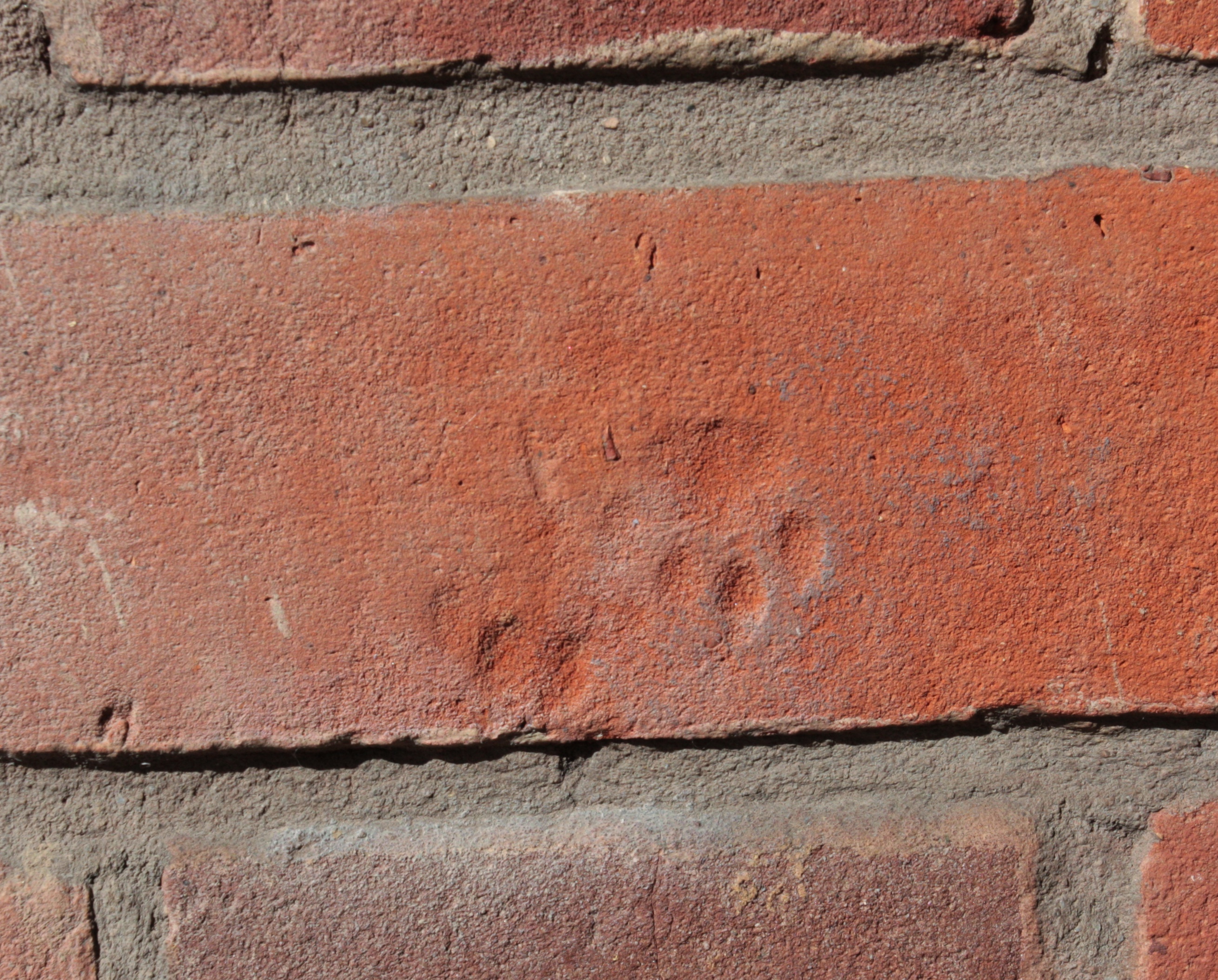
Historically, bricks, tiles and other ceramic building materials (abbreviated to CBM by those who have had to shovel bag-loads of the stuff off site for quantification) have been dried in the sun prior to firing. This allows a lot of the moisture to leave the bricks before they are subjected to intense heat in the kiln. The benefit of this is that the gentle loss of water prevents boiling, or straightforward explosion, during firing, and means that the manufacturer ends up with more brick for their buck. The downside? Whilst the bricks are laid out in the sun gently drying in the heat, dogs, cats, rats and other animals scamper across them leaving behind footprints in the soft clay.
These are seen throughout the world – set into courtyards, on roofs and built into walls – holding the preserved footfall of animals long since departed for the great brickyard in the sky. One notable example is the Vasa shipwreck whose galley had bricks impressed with pig prints.

Portway House, Wessex Archaeology’s HQ in Salisbury, which was built in 1933, has its own set of feline footprints, visible in a brick set into the eastern entry to the building.
Some cultures believe that such footprints are lucky, and that they bring blessings to the buildings they adorn. Rumours of brickyards employing/keeping animals to create ‘lucky’ footprints abound. Archaeologically, these bricks provide a really interesting piece of supplementary evidence about the animals living alongside people in the past, but are they lucky?
The cynic in me would suggest that the luck of the footprints is a cunning marketing ploy from frustrated brick makers who didn’t want to waste damaged stock (and bricks were expensive to manufacture in the past – there are many examples of sub-perfect bricks being used). But after 35 years, 27 of which have been in our cat-attacked HQ, Wessex Archaeology continues to thrive and has expanded to a further five regional offices. So perhaps there is something in it after all.
By Gemma Ingason, Community & Education Officer